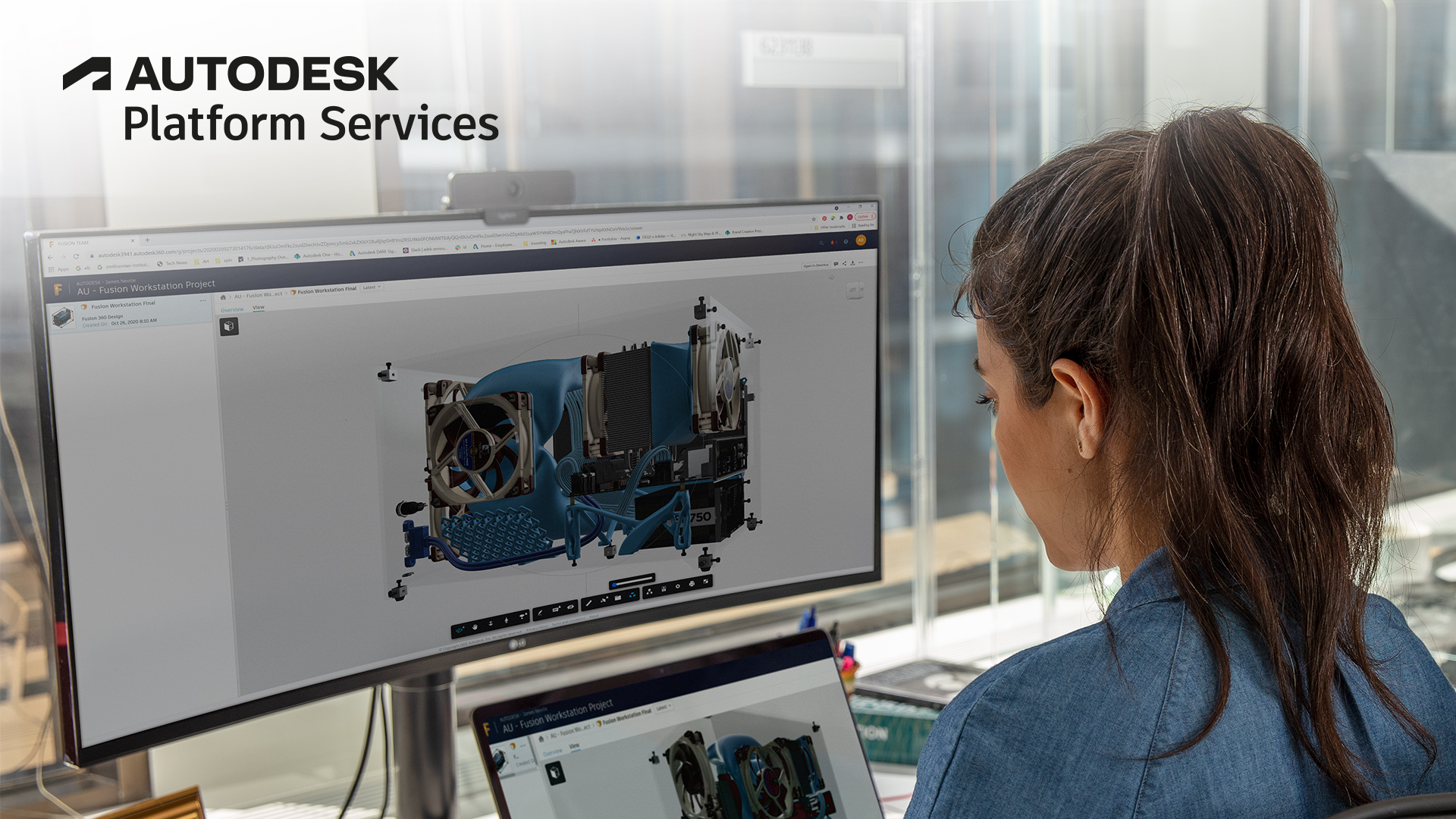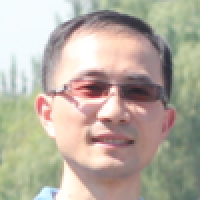30 May 2018
Custom Window Selection in the Forge Viewer - Simpler Extension

Our colleague Philippe has produced a very cool extension on selecting object by window.
- https://forge.autodesk.com/blog/custom-window-selection-forge-viewer-part-i
- https://forge.autodesk.com/blog/custom-window-selection-forge-viewer-part-ii
- https://forge.autodesk.com/blog/custom-window-selection-forge-viewer-part-iii
The main workflow of selecting window is:
- Get bounding boxes of all geometry fragments of the model
- Get the bounding sphere of the whole model (depth of the model)
- The end user selects two points of the canvas, then get the 4 points of rectangle
- Build the faces (planes) from the 4 points of rectangle to the depth of the model (step #2). The faces are along with the current camera
- Check if the boxes (step #1) are within the space of the faces (step #4), identify them as box inside the select window
- Check if the boxes are intersected with the faces (triangles), identify them as box that has partially selected by the window
- Get corresponding objects DbId of the boxes of #5 and #6.
This works well, but some customers are interested in the core codes of demo only, and do not want to use WebPack and some ES6 codes. So I tried to isolate the core section and produced a small demo extension. It can be loaded directly with the project. In addition, data preparation of the algorithms and object insect checking are little different to Philippe's codes.
In step #1, the previous codes get model dbid of all geometry node by enumerating InstanceTree, and enumerate each object to get fragments list, finally get their boxes. My codes simply gets all boxes from the loaded array: fragList.fragments.boxes. Because fragList.fragments.fragId2dbId is a map of fragment index to its dbid, it is easier to know the box of a fragment.
//fragments list array
var fragList = model.getFragmentList();
//boxes array
var boxes = fragList.fragments.boxes;
//map from frag to dbid
var fragid2dbid = fragList.fragments.fragId2dbId;
//build _boundingBoxInfo by the data of Viewer directly
//might probably be a bit slow with large model..
_boundingBoxInfo = [];
var index = 0;
for(var step=0;step<fragid2dbid.length;step++){
index = step * 6;
var thisBox = new THREE.Box3(new THREE.Vector3(boxes[index],boxes[index+1],boxes[index+2]),
new THREE.Vector3(boxes[index+3],boxes[index+4],boxes[index+5]));
_boundingBoxInfo.push({bbox:thisBox,dbId:fragid2dbid[step]});
}
As to step #6, I found another library AABBCollision that has better performance: So the related codes is simply checking if each triangle of the faces of select window has collision with the box.
//get those boxes which are initersected with the
//range of select window (triangles)
function boxIntersectVertex (box, triangles) {
for(index in triangles){
var t = triangles[index];
if(collision.isIntersectionTriangleAABB(t.a,t.b,t.c,box))
return true;
}
return false;
}
The below is the complete codes of the extension.
/////////////////////////////////////////////////////////////////
// SelectionWindow Viewer Extension
// By Xiaodong Liang, Autodesk Inc, August 2020
//
/////////////////////////////////////////////////////////////////
//referece:
// https://forge.autodesk.com/blog/custom-window-selection-forge-viewer-part-iii
function MySelectionWindow(viewer, options) {
Autodesk.Viewing.Extension.call(this, viewer, options);
//Forge Viewer
var _viewer = this.viewer;
//bounding sphere of this model
var _boundingSphere = null;
//container DIV of the viewer
var _container = _viewer.canvas.parentElement;
//start point of select window
var _mouseStart = new THREE.Vector3(0,0,-10);
//end point of select window
var _mouseEnd = new THREE.Vector3(0,0,-10);
//is selecting window running
var _running = false;
//rectangle lines of select window
var _lineGeom = null;
var _rectGroup = null;
//material for rectangle lines of select window
var _materialLine = null;
//when extension is loaded
this.load = function() {
console.log('MySelectionWindow is loaded!');
//bind keyup event
$(document).bind('keyup', onKeyUp);
_viewer.impl.invalidate(true);
return true;
};
//when extension is unloaded
this.unload = function() {
console.log('MySelectionWindow is now unloaded!');
//unbind keyup event
$(document).unbind('keyup', this.onKeyUp);
return true;
};
//build boundingbox info of each fragments
this.init = function(){
var model = _viewer.model;
var instanceTree = model.getInstanceTree();
//get bounding sphere of whole model
_boundingSphere = model.getBoundingBox().getBoundingSphere();
//fragments list array
var fragList = model.getFragmentList();
//boxes array
var boxes = fragList.fragments.boxes;
//map from frag to dbid
var fragid2dbid = fragList.fragments.fragId2dbId;
//build _boundingBoxInfo by the data of Viewer directly
//might probably be a bit slow with large model..
_boundingBoxInfo = [];
var index = 0;
for(var step=0;step<fragid2dbid.length;step++){
index = step * 6;
var thisBox = new THREE.Box3(new THREE.Vector3(boxes[index],boxes[index+1],boxes[index+2]),
new THREE.Vector3(boxes[index+3],boxes[index+4],boxes[index+5]));
_boundingBoxInfo.push({bbox:thisBox,dbId:fragid2dbid[step]});
}
//create a material for the selection rectangle
_materialLine = new THREE.LineBasicMaterial({
color: new THREE.Color(0xFF00FF),
linewidth: 1,
opacity: .6
});
}
//when key up
function onKeyUp(evt) {
console.log('onKeyUp:' + evt.keyCode);
//when key 'S' is pressed
if(evt.keyCode == 83){
//lock navigation to fix the camera
_viewer.navigation.setIsLocked(true) ;
//start to monitor mouse down
_container.addEventListener('mousedown',onMouseDown);
//get current camera
var canvas = _viewer.canvas;
var canvasWidth = canvas.clientWidth;
var canvasHeight = canvas.clientHeight;
var camera = new THREE.OrthographicCamera(
0,canvasWidth,0,canvasHeight,1,1000)
//create overlay scene for selection window
_viewer.impl.createOverlayScene(
"selectionWindowOverlay",
_materialLine,
_materialLine,
camera);
}
//when key 'Q' is pressed
if(evt.keyCode == 81){
//unlock current navigation
_viewer.navigation.setIsLocked(false) ;
//remove mouse events
_container.removeEventListener('mouseup',onMouseUp);
_container.removeEventListener('mousemove',onMouseMove);
_running = false;
//remove the Overlay Scene
_viewer.impl.removeOverlayScene(
"selectionWindowOverlay");
}
return true;
}
function onMouseMove(evt) {
//var viewport = _viewer.impl.clientToViewport(evt.clientX, evt.clientY);
if(_running){
//calculate the offset with viewer container position, for Three.js geometry
const viewer_pos = _viewer.container.getBoundingClientRect();
//get mouse points
_mouseEnd.x = evt.clientX - viewer_pos.x;
_mouseEnd.y = evt.clientY - viewer_pos.y;
//update rectange lines
_lineGeom.vertices[1].x = _mouseStart.x;
_lineGeom.vertices[1].y = _mouseEnd .y;
_lineGeom.vertices[2] = _mouseEnd.clone();
_lineGeom.vertices[3].x = _mouseEnd.x;
_lineGeom.vertices[3].y = _mouseStart.y;
_lineGeom.vertices[4] = _lineGeom.vertices[0];
_lineGeom.verticesNeedUpdate = true;
_viewer.impl.invalidate(false, false, true);
}
}
function onMouseUp(evt) {
if(_running){
//calculate the offset with viewer container position, for Three.js geometry
const viewer_pos = _viewer.container.getBoundingClientRect();
//get mouse points
_mouseEnd.x = evt.clientX - viewer_pos.x;
_mouseEnd.y = evt.clientY - viewer_pos.y;
//remove the overlay of one time rectangle
_viewer.impl.removeOverlay("selectionWindowOverlay", _rectGroup);
_running = false;
//remove mouse event
_container.removeEventListener('mouseup',onMouseUp);
_container.removeEventListener('mousemove',onMouseMove);
//get box within the area of select window, or partially intersected.
//now we need to offset the screenpoint back without viewer container position.
var ids = compute({clientX:_mouseStart.x + viewer_pos.x ,
clientY:_mouseStart.y + viewer_pos.y},
{clientX:_mouseEnd.x + viewer_pos.x,
clientY:_mouseEnd.y + viewer_pos.y},
false); // true: partially intersected. false: inside the area only
//highlight the selected objects
_viewer.select(ids);
}
}
function onMouseDown(evt) {
_viewer.clearSelection();
//calculate the offset with viewer container position, for Three.js geometry
const viewer_pos = _viewer.container.getBoundingClientRect();
//get mouse points
_mouseStart.x = evt.clientX - viewer_pos.x;
_mouseStart.y = evt.clientY - viewer_pos.y;
_running = true;
//build the rectangle lines of select window
if(_rectGroup === null) {
_lineGeom = new THREE.Geometry();
_lineGeom.vertices.push(
_mouseStart.clone(),
_mouseStart.clone(),
_mouseStart.clone(),
_mouseStart.clone(),
_mouseStart.clone());
// add geom to group
var line_mesh = new THREE.Line(_lineGeom, _materialLine, THREE.LineStrip);
_rectGroup = new THREE.Group();
_rectGroup.add(line_mesh);
}
else{
_lineGeom.vertices[0] = _mouseStart.clone();
_lineGeom.vertices[1] = _mouseStart.clone();
_lineGeom.vertices[2] = _mouseStart.clone();
_lineGeom.vertices[3] = _mouseStart.clone();
_lineGeom.vertices[4] = _mouseStart.clone();
_lineGeom.verticesNeedUpdate = true;
}
_viewer.impl.addOverlay("selectionWindowOverlay", _rectGroup);
_viewer.impl.invalidate(false, false, true);
//start to mornitor the mouse events
_container.addEventListener('mouseup',onMouseUp);
_container.addEventListener('mousemove',onMouseMove);
}
//prepare the range of select window and filter out those objects
function compute (pointer1, pointer2,partialSelect) {
// build 4 rays to project the 4 corners
// of the selection window
var xMin = Math.min(pointer1.clientX, pointer2.clientX)
var xMax = Math.max(pointer1.clientX, pointer2.clientX)
var yMin = Math.min(pointer1.clientY, pointer2.clientY)
var yMax = Math.max(pointer1.clientY, pointer2.clientY)
var ray1 = pointerToRay({
clientX: xMin,
clientY: yMin
})
var ray2 = pointerToRay({
clientX: xMax,
clientY: yMin
})
var ray3 = pointerToRay({
clientX: xMax,
clientY: yMax
})
var ray4 = pointerToRay({
clientX: xMin,
clientY: yMax
})
// first we compute the top of the pyramid
var top = new THREE.Vector3(0,0,0)
top.add (ray1.origin)
top.add (ray2.origin)
top.add (ray3.origin)
top.add (ray4.origin)
top.multiplyScalar(0.25)
// we use the bounding sphere to determine
// the height of the pyramid
var {center, radius} = _boundingSphere
// compute distance from pyramid top to center
// of bounding sphere
var dist = new THREE.Vector3(
top.x - center.x,
top.y - center.y,
top.z - center.z)
// compute height of the pyramid:
// to make sure we go far enough,
// we add the radius of the bounding sphere
var height = radius + dist.length()
// compute the length of the side edges
var angle = ray1.direction.angleTo(
ray2.direction)
var length = height / Math.cos(angle * 0.5)
// compute bottom vertices
var v1 = new THREE.Vector3(
ray1.origin.x + ray1.direction.x * length,
ray1.origin.y + ray1.direction.y * length,
ray1.origin.z + ray1.direction.z * length)
var v2 = new THREE.Vector3(
ray2.origin.x + ray2.direction.x * length,
ray2.origin.y + ray2.direction.y * length,
ray2.origin.z + ray2.direction.z * length)
var v3 = new THREE.Vector3(
ray3.origin.x + ray3.direction.x * length,
ray3.origin.y + ray3.direction.y * length,
ray3.origin.z + ray3.direction.z * length)
var v4 = new THREE.Vector3(
ray4.origin.x + ray4.direction.x * length,
ray4.origin.y + ray4.direction.y * length,
ray4.origin.z + ray4.direction.z * length)
// create planes
var plane1 = new THREE.Plane()
var plane2 = new THREE.Plane()
var plane3 = new THREE.Plane()
var plane4 = new THREE.Plane()
var plane5 = new THREE.Plane()
plane1.setFromCoplanarPoints(top, v1, v2)
plane2.setFromCoplanarPoints(top, v2, v3)
plane3.setFromCoplanarPoints(top, v3, v4)
plane4.setFromCoplanarPoints(top, v4, v1)
plane5.setFromCoplanarPoints( v3, v2, v1)
var planes = [
plane1,
plane2,
plane3,
plane4,
plane5
]
var vertices = [
v1, v2, v3, v4, top
]
// filter all bounding boxes to determine
// if inside, outside or intersect
var result = filterBoundingBoxes(
planes, vertices, partialSelect)
// all inside bboxes need to be part of the selection
var dbIdsInside = result.inside.map((bboxInfo) => {
return bboxInfo.dbId
})
// if partialSelect = true
// we need to return the intersect bboxes
if (partialSelect) {
var dbIdsIntersect = result.intersect.map((bboxInfo) => {
return bboxInfo.dbId
})
return [...dbIdsInside, ...dbIdsIntersect]
}
return dbIdsInside
}
//rays of the corners of select window
function pointerToRay (pointer) {
var camera = _viewer.navigation.getCamera();
var pointerVector = new THREE.Vector3()
var rayCaster = new THREE.Raycaster()
var pointerDir = new THREE.Vector3()
var domElement = _viewer.canvas
var rect = domElement.getBoundingClientRect()
var x = ((pointer.clientX - rect.left) / rect.width) * 2 - 1
var y = -((pointer.clientY - rect.top) / rect.height) * 2 + 1
if (camera.isPerspective) {
pointerVector.set(x, y, 0.5)
pointerVector.unproject(camera)
rayCaster.set(camera.position,
pointerVector.sub(
camera.position).normalize())
} else {
pointerVector.set(x, y, -15)
pointerVector.unproject(camera)
pointerDir.set(0, 0, -1)
rayCaster.set(pointerVector,
pointerDir.transformDirection(
camera.matrixWorld))
}
return rayCaster.ray
}
//filter out those objects in the range of select window
function filterBoundingBoxes (planes, vertices, partialSelect) {
var intersect = []
var outside = []
var inside = []
var triangles = [
{a:vertices[0],b:vertices[1],c:vertices[2]},
{a:vertices[0],b:vertices[2],c:vertices[3]},
{a:vertices[1],b:vertices[0],c:vertices[4]},
{a:vertices[2],b:vertices[1],c:vertices[4]},
{a:vertices[3],b:vertices[2],c:vertices[4]},
{a:vertices[0],b:vertices[3],c:vertices[4]}
]
for (let bboxInfo of _boundingBoxInfo) {
// if bounding box inside, then we can be sure
// the mesh is inside too
if (containsBox (planes, bboxInfo.bbox))
{
inside.push(bboxInfo)
} else if (partialSelect) {
//reconstructed by using AABBCollision lib.
if(boxIntersectVertex(bboxInfo.bbox,triangles))
intersect.push(bboxInfo)
else
outside.push(bboxInfo)
} else {
outside.push(bboxInfo)
}
}
return {
intersect,
outside,
inside
}
}
//get those boxes which are included in the
//range of select window
function containsBox (planes, box) {
var {min, max} = box
var vertices = [
new THREE.Vector3(min.x, min.y, min.z),
new THREE.Vector3(min.x, min.y, max.z),
new THREE.Vector3(min.x, max.y, max.z),
new THREE.Vector3(max.x, max.y, max.z),
new THREE.Vector3(max.x, max.y, min.z),
new THREE.Vector3(max.x, min.y, min.z),
new THREE.Vector3(min.x, max.y, min.z),
new THREE.Vector3(max.x, min.y, max.z)
]
for (let vertex of vertices) {
for (let plane of planes) {
if (plane.distanceToPoint(vertex) < 0) {
return false
}
}
}
return true
}
//get those boxes which are initersected with the
//range of select window (triangles)
function boxIntersectVertex (box, triangles) {
for(index in triangles){
var t = triangles[index];
if(collision.isIntersectionTriangleAABB(t.a,t.b,t.c,box))
return true;
}
return false;
}
}
MySelectionWindow.prototype = Object.create(Autodesk.Viewing.Extension.prototype);
MySelectionWindow.prototype.constructor = MySelectionWindow;
Autodesk.Viewing.theExtensionManager.registerExtension('MySelectionWindow', MySelectionWindow);Reference in HTML:
<!-- copy from https://gist.github.com/yomotsu/d845f21e2e1eb49f647f -->
<script src='AABBCollision.js'></script>
<!--selection window extension-->
<script src='MySelectionWindow.js'></script>Reference in JS file if you want to load it when the model tree has been initialized.
viewer.addEventListener(Autodesk.Viewing.OBJECT_TREE_CREATED_EVENT, geometobjectTreeCreated);
function geometobjectTreeCreated(evt){
//load the extension MySelectionWindow and call initialization
viewer.loadExtension('MySelectionWindow').then(function(ext){
ext.init();
});
}After the extension is loaded and initialized, press key 'S' in the canvas, select objects by a window, the objects inside the range or partially intersecting with the range will be highlighted. Click 'Q', selecting window mode exits.
Limitation of the algorithm of intersected box
The algorithm of partially intersecting with the range works in most case, but since bounding box is axis-aligned minimum box of the geometry. So it would include all spaces the geometry covers. e.g. if a geometry has holes, or the geometry is a kind of 'L' shape, 'U' shape. In such cases, i if the selection window covers those vacancies only, the geometries will be still identified as 'intersected box' as well. This is same to Philippe's code and mine.
I have not got an idea how to solve the limitation. It would be a more complicated codes with a precise intersecting. The suggestion is to check the objects that are inside the selection range only. i.e. set the third param = false when calling this function:
var ids = compute(
{clientX:_mouseStart.x,clientY:_mouseStart.y},
{clientX:_mouseEnd.x,clientY:_mouseEnd.y},
false); // true: partially intersected. false: inside the area onlyor remind the end user to re-filter some useless objects manually.






